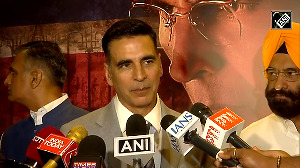The Reserve Bank should focus on making liquidity easier rather than cutting rates if the intent is to drive growth, Axis Bank's chief economist Neelkanth Mishra said on Tuesday.

Mishra, who is also a part-time member of the Economic Advisory Council to the PM, said the rate cut announced earlier this month or even the subsequent ones if they were to come will not end up increasing borrowings as the scarce liquidity will hamper transmission.
"If the objective is to ease financial conditions and support growth, which is what the MPC has stated...my prescription would be to focus on liquidity first because at this stage, cutting rates is not helping," Mishra told reporters at the bank headquarters on the sidelines of an event.
"If the objective is to use monetary tools to support growth, liquidity should be the first measure," he added.
Mishra said if the objective of the rate cut is to trigger more borrowings, the new loans are not going to get done at lower rate as the marginal cost of money remains elevated due to the tight liquidity conditions which have been there for the last 18 months.
He said that the one-year certificate of deposits rate continues to be at a high 7.8 per cent despite the 25 basis points rate cut by the RBI.
It can be noted that after announcing the rate cut, the RBI had opined that about 40 per cent of the loans will get repriced immediately as they are linked to the external benchmark, while the others will take up to two quarters more.
Mishra acknowledged that analysts are expecting a total of three cuts to take the cumulative decrease to 75 basis points as part of the current cycle, but reiterated that looking at liquidity will be more effective.
He also reminded that the new RBI Governor, Sanjay Malhotra has affirmed to provide necessary liquidity to the market.
When asked about the liquidity measures that he would recommend at the current juncture, Mishra voted for regular open market operations by the RBI to provide the durable liquidity, and added that rather than another cash reserve ratio (CRR) cut, an incremental CRR cut would be more effective.
Mishra said if the liquidity normalizes fast enough, and the government sticks to its fiscal side commitments, he sees GDP growth accelerating to 7 per cent levels from Q2FY26 onwards.
Attaining 7 per cent is the "trend growth" for India, he said, adding that amid the volatilities at the global level, a large part of it will come domestically.
He said the global market has become less relevant from a growth perspective for India over the years, and added that while global events are headwinds, the economy can be resilient amid those.
The chief economist also cautioned against concentration of value within top private enterprises valued at over $1 billion each, pointing out that "we need to ensure that there is a trickle-down of the benefits to a larger ecosystem."
Flagging the power sector as a source of concern, Mishra said India may witness power cuts in the next few years even if energy demand rises by 4 per cent per year, and hence, needs to urgently focus on adding generating capacities.
He said there has not been sufficient addition on the power generation front over the last decade, and hoped that nuclear energy can be of help here.











 © 2025
© 2025